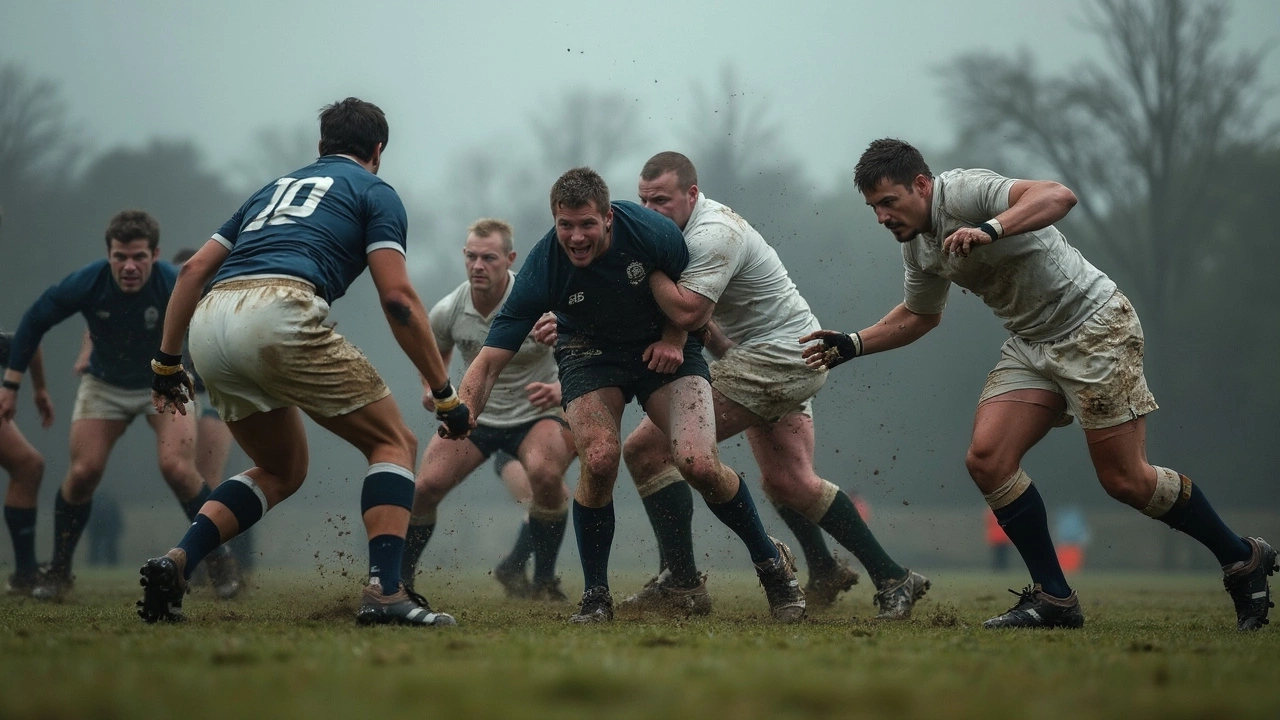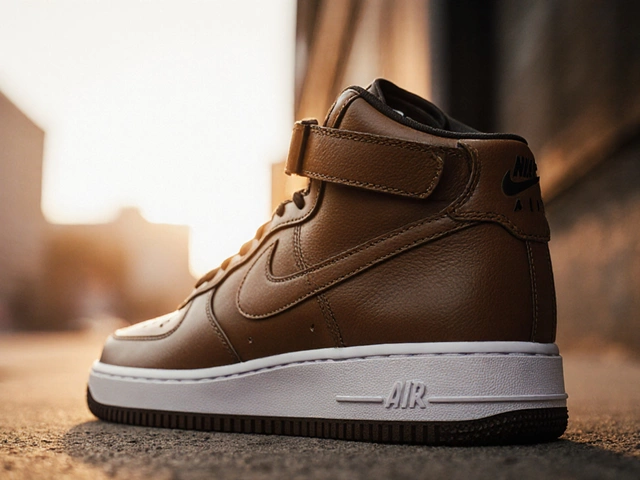Picture this: the match is burning hot, bodies everywhere, and there’s this bloke—shirt a mess, eyes like a hawk—diving onto the ball after a tackle. Suddenly, the ref’s whistle cuts through the chaos, arms out for a penalty. The defending team celebrates. What just happened? That’s the magic of the jackal in rugby. It’s scrappy, it’s brave, and it makes fans roar. The jackal isn’t some wild animal, but the player who wins back possession right at the messiest spot on the field.
The Basics: What Does 'Jackal' Mean in Rugby?
The term ‘jackal’ comes straight from rugby lingo and nails that moment when a defender swoops in right after a tackle, grabs onto the ball, and tries to rip it away from the attacking team. Rugby folk nicknamed it ‘jackaling’ because, like the animal, the player sniffs out scraps and seizes them fast. Originally, it was more of an open secret among forwards, but now, backs and even wingers can pull it off. The move hinges on timing, guts, and, yes, a splash of fearlessness. Get it wrong and you’re dead weight, giving away a penalty or just getting flattened. Get it right and you can flip the game.
This isn’t some new-fangled tactic. We’re talking about a play that’s been around since breakdown contests became a thing, but only got its catchy name over the last couple decades. No matter the level—from Wallabies matches at Adelaide Oval to Sunday club footies in the park—the jackal is a highlight for players and fans. And here’s a little trivia: open-side flankers have racked up more turnovers thanks to the jackal than any other move since the 2010s. If you’ve watched international rugby lately, you’ll see legends like David Pocock or Michael Hooper practically live for this role.
How Does the Jackal Work?
The jackal unfolds in a heartbeat. When a player is tackled and hits the ground, the ball is (for a second) up for grabs. The tackler needs to release, but after that, a defender can leap over the tackled body, go for the ball, and stay on their feet—all while bracing for contact. The moment the ball carrier’s teammates show up to protect or clear out, the clock is ticking. The jackal must clamp onto the ball, support their own body weight (legally, mind you), and try to wrench it free or force a penalty from the attacking team if they hold on too long.
Rules matter here. According to World Rugby’s laws (not just street knowledge from Aussies at the local club), the player must:
- Arrive through the gate (directly behind the tackle, no sneaky side entry)
- Stay on their feet—no collapsing on the ruck, keeping clear support of their own body weight
- Grab the ball before a ruck forms (as soon as a second arriving player jumps in, it turns into a ruck and hands are a no-go)
It’s a tiny window—sometimes just one second. But it’s long enough to snatch a game-changing turnover. If done well, the ref rewards the jackal: turnover, penalty, or, in rare cases, even a quick charge towards the try line with a loose ball. If done poorly, you’ve gifted the other side a huge attacking chance.

Spotting the Perfect Jackal: Traits and Techniques
When my kid Finn first tried to jackal in junior rugby, he looked like a seagull fighting over a hot chip—keen but all chaos. That’s pretty normal. The good jackals, though, are deliberate. They read the field, time their runs, lower their centre of gravity, and dig their feet in. Balance is key; you can’t squat too low, or you’ll get smashed, but lean in high and you’ll tumble right over. It’s tricky.
Here are a few things that set elite jackals apart:
- Speed to the Breakdown: Arrive first or not at all. The first player often gets the pickings. If you come late, your own team’s outmuscled or the ruck’s closed.
- Body Position: Imagine almost doing a squat, hips low, legs wide, butt down but head up. Too upright and you’re easy to clean out.
- Grip: They don’t just slap at the ball; good jackals wedge their hands right over it, knuckles scraped, elbows locked.
- Peripheral Vision: If you’re staring just at the ball, you’ll never see the impending clear-out. You need eyes in the back of your head to brace for new arrivals.
- Toughness: Expect to get smashed. Good jackalers get right back up, just like Finn, who coped a boot to the shins and still went again.
Some drills that help? Heavy contact pads, short sprints to simulate a rush, and “fend-off” practice to build upper-body strength. Watching games helps, too. Players like Richie McCaw (yes, I know I’m name-dropping a Kiwi) mastered jackaling by combining lightning-fast reactions with a bit of legal cheek.
The Risks and Rewards of the Jackal
No doubt about it, jackaling is gutsy, but it’s risky. There’s a reason coaches warn younger players to pick their moments. Rule tweaks in recent years—especially around the neck and head safety—means refs penalize high, dangerous entries more. No player wants to eat a yellow card for overzealous jackaling. Injuries crop up, too. In fact, a study from Sydney Uni’s rugby department in 2023 found more than 35% of breakdown injuries came from players who tried to jackal but didn’t support their weight or protect themselves during the clear-out. And the turnover isn’t always risk-free. Steal the ball and you need support—or you’re an easy mark for a counter-tackle.
The rewards, though, are worth it. Winning a jackal turnover can flip field position and momentum. Some Super Rugby coaches list “effective jackals” as a key stat alongside tackles and line breaks. Last season, the Brumbies averaged seven jackal turnovers per game, and it made a difference in close matches. If you want to impress a selector, nail the jackal. If you want bragging rights with your mates, win that turnover at the death and hear the cheers.
The art isn’t just about snatching the ball; it’s about reading the game. Smart players size up the opposition’s support runners, anticipate who’ll reach the breakdown next, and make split-second calls—attack the ball or back out before they get pinged for a penalty. That risk-versus-reward calculation is the heartbeat of breakdown rugby today.

Jackaling in Modern Rugby: More Than Just a Flanker's Game
The jackal is always evolving. Back in the day, open-side flankers—think George Smith or Michael Hooper—dominated this move. But the modern game throws up surprises. Centres like Samu Kerevi aren’t shy to rip a turnover, and even wingers try their hand at it, especially as teams move to wider breakdowns near the touchline. Coaches now look for all-rounders who can defend and jackal. It’s not just about size, though—smaller, wiry players often sneak in, get lower, and beat bigger bodies to the ball.
Data backs this up. Here’s a quick look at jackal turnovers in top leagues last year:
| Competition | Average Jackal Turnovers per Game | Most Jackals in 2024 |
|---|---|---|
| Super Rugby Pacific | 7.4 | Fraser McReight |
| English Premiership | 6.2 | Ben Earl |
| United Rugby Championship | 5.9 | Josh van der Flier |
The point? Don’t pigeonhole jackaling as a single-position job. Training up kids (like Finn and his mates) on basic jackal technique pays off no matter where they settle on the field later. Plus, it means everyone’s got a chance to be the hero in the game’s dying minutes.
For coaches, the best tip is making live breakdown practice part of every session. For parents, get your kids to watch the breakdown closely next time you catch a Rebels or Wallabies game. For spectators, remember—when you see a player crouched like a tiger over the ball and staying on his feet, you’re watching rugby’s wildest power play. Beyond the muscle, it’s a battle of brains and nerve. And that’s why the jackal will never get old.







